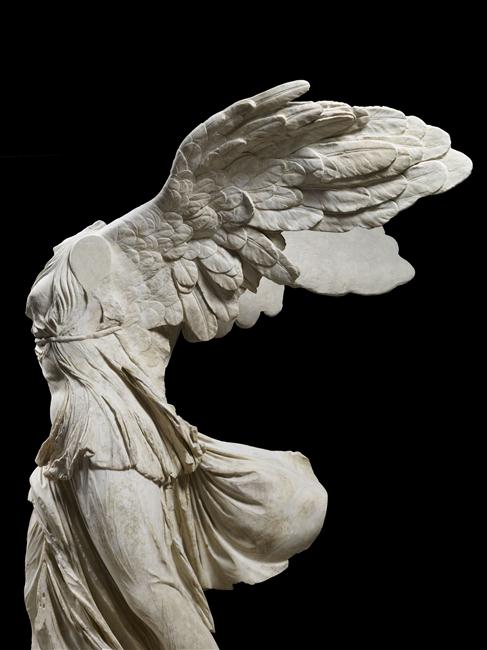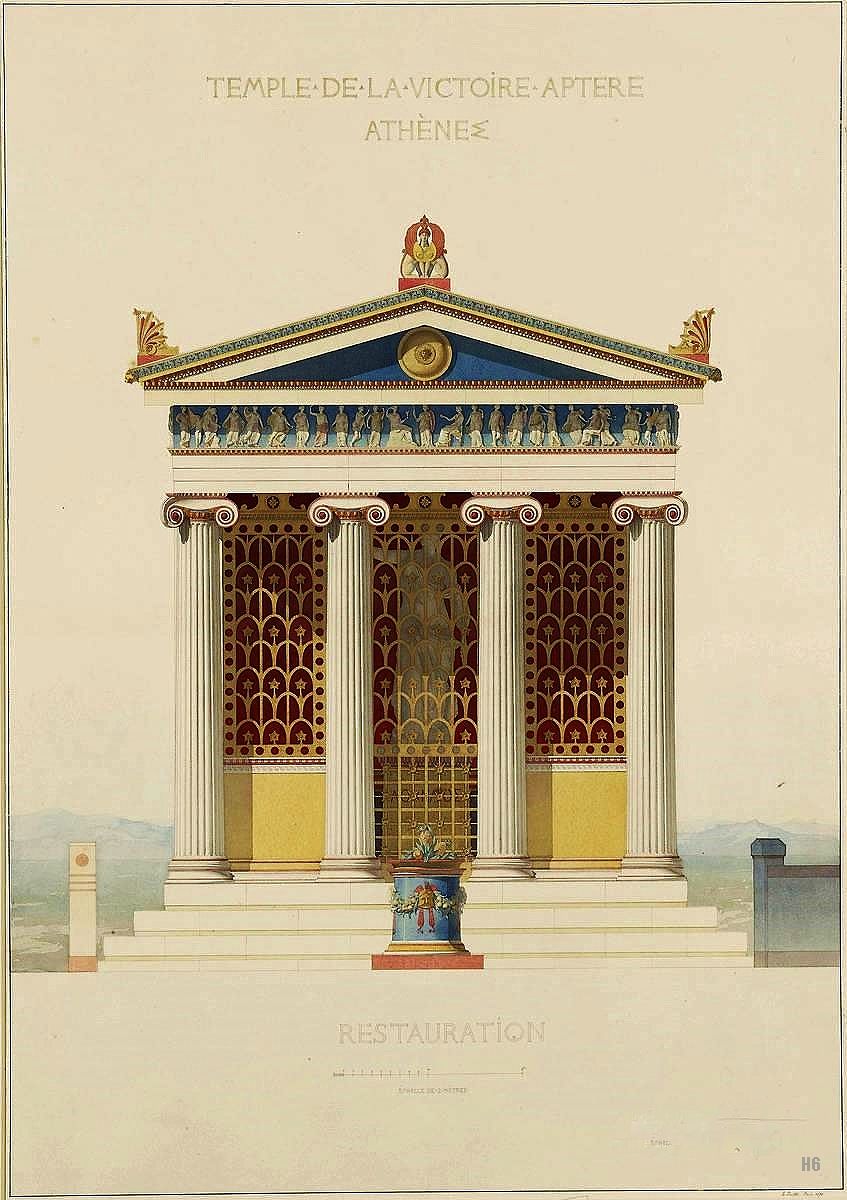
One of the greatest masterpieces of Greek art, Nike of Samothrace is unrivaled in the personification of that victorious divine spirit carrying human perseverance beneath her wings.
Nike of Samothrace (with wings details) Parian marble, Hellenistic c. 200–190 BC-The Louvre


Nike of Samothrace (with wings details) Parian marble, Hellenistic c. 200–190 BC-The Louvre



One of my favorite Nike depictions is this striking "one-wing" Nike, which seems to have survived by losing one of her wings, thus heralding a prophetic cry: Victory is never gained unscathed.
Nike Bronze statuette-Hellenistic period at The Louvre.

Nike Bronze statuette-Hellenistic period at The Louvre.


Winged Nike of Samothrace alighting on the prow of a Hellenistic warship, made by a Rhodian sculptor out of Parian marble. The ship & base are carved from grey marble veined with white, identified as that of the quarries of Lartos, in Rhodes. ca. 200–190 BC at the Louvre [1]
The Athena Nike inside her temple's cella (on the Acropolis) was called Athena Apteros, "without wings", which according to Pausanias, this Athena Nike was wingless so she could never leave Athens. 



Two drawings depicting the colored restoration of the Temple of Athena Nike ca. 420 BC drawn by French architect Louis Philippe Francois Boitte [1830-1906]
• • •
Missing some Tweet in this thread? You can try to
force a refresh

















